Christopher Hector takes a look at the development of the Classical Tradition of Dressage, starting with that famous Greek…
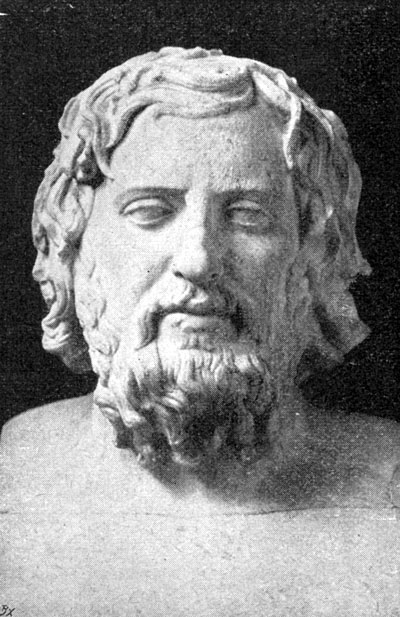
Just what did Xenophon teach?
There has been much hot debate about The Classical Principles of Dressage. My feeling is that many enthusiasts have the idea that the Classical Principles were discovered, written perhaps like the ten commandments on tablets of stone, by Xenophon, one of the great Greek horsemen a couple of thousand years ago. For example, in Germany, the Professional Riders in response to the debate with the followers of the Anky and Sjef School, put out a pamphlet with the message – We don’t want hyperflexion – we have had our principles for 2500 years!
Which is simply not true. There is almost nothing in Xenophon that would help you train the modern dressage horse….
The training techniques of dressage evolve and change with the evolution and development of the horse and the demands being placed on both horse and rider – but so long as these techniques fit within an ongoing concern and respect for the horse’s physical and mental development, they should rightly be accepted as being part of the Classical Tradition – and it is this word Tradition rather than Principles, that allows us to see to the core of those horse friendly training methods we rightly seek to promote.
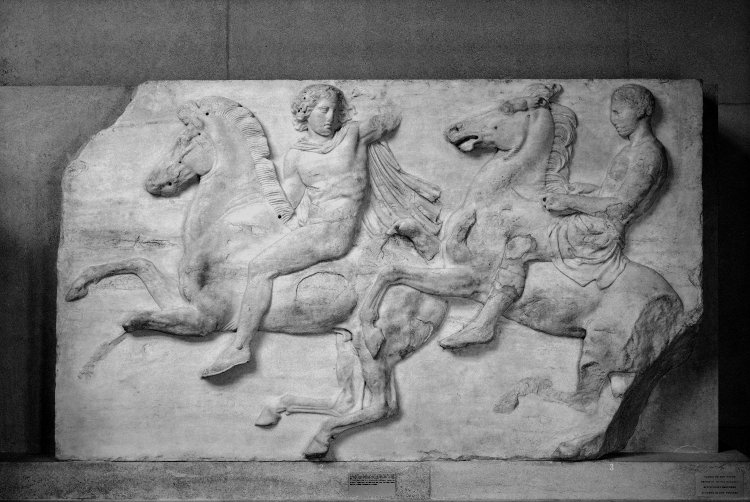
An evolving tradition allows us to accept some new methods and reject others… I suspect the dressage enthusiasts who get the most inspiration from the ancient Greek military commander and horseman, Xenophon, are the ones who have never actually attempted to read his little book. Or certainly that is the impression you get when you hear statements like, “All the wisdom you need to train a horse are to be found in the teachings of Xenophon.”
I am sure they have a vision of dear old Xenophon, togged out in the latest breeches and long boots, mounted on his handsome Hanoverian gelding, warming up long and low – but never ever behind the vertical! – with the latest Isabell saddle, and using the latest double jointed snaffle as approved by Professor Clayton, working his way through medium advanced in the direction of the FEI levels.
Story continues below the advertisement
Of course, the truth is nothing like that. The truth is, that there is very little, if anything, Xenophon has to offer the modern rider – or the medieval, renaissance or nineteenth century one for that matter. For a start the horses were not very large. According to J. K. Anderson in his Ancient Greek Horsemanship, the Greek horse at the time of Xenophon was “a small animal, perhaps never exceeding, and seldom reaching, fifteen hands, with a fine head and legs, high head carriage, and rather heavy body.”
My friend Gerd Heuschmann would be happy to know that Xenophon recommends strewing stones in the horse’s enclosure to strengthen its hooves, in particular its frog. After 24 pages of very general horse care instructions we do find a little nugget of gold:
“The one great precept and practice in using a horse is this – never deal with him when you are in a fit of passion. A fit of passion is a thing that has no foresight in it, and so we often have to rue the day when we gave way to it. Consequently, when your horse shies at an object and is unwilling to go up to it, he should be shown that there is nothing fearful in it, least of all to a courageous horse like him; but if this fails, touch the object yourself that seems so dreadful to him, and lead him up to it with gentleness. Compulsion and blows inspire only the more fear; for when horses are at all hurt at such a time, they think that what they shied at is the cause of the hurt.”
Andrew McLean might have some rather better advice for dealing with shying and could explain to dear old Xenophon that horses do not have the kind of reasoning powers that allow them to learn by example as he suggests, but the general principle of not beating the tripe out of your neddy because you are in a bad mood, is worth repeating over and over again.
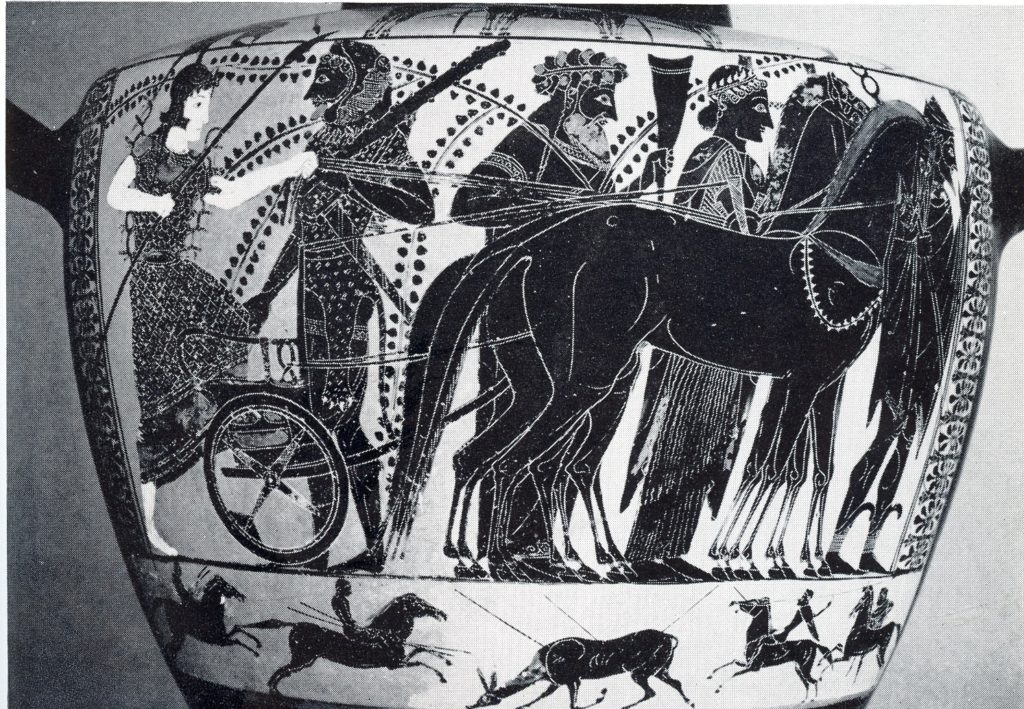
There is only one schooling exercise to be found in Xenophon’s The Art of Horsemanship, what he calls ‘the Career’.
“I recommend the Career with sharp turns at each end rather than the complete Volte; for the horse would like turning better after he has had enough of the straight course, and thus would be practising straight-way running and turning at the same time.”
According to J. K. Anderson in Ancient Greek Horsemanship, Xenophon taught that the horse should lead with the left leg all the time and “does not appear to have practised, changing the leading foot.”
Xenophon also taught his horse to jump natural obstacles like ditches, to go down hills.
Now to a paragraph that I guess is much quoted, and more often misquoted, or improved upon in the process:
“If you desire to handle a good war-horse so as to make his action the more magnificent and striking, you must refrain from pulling at his mouth with the bit as well as from spurring and whipping him. Most people think that this is the way to make him look fine; but they only produce an effect exactly contrary to what they desire, they positively blind their horses by jerking the mouth up instead of letting them look forward, and by spurring and striking scare them into disorder and danger. This is the way horses behave that are fretted by their riders into ugly and ungraceful action; but if you teach your horse to go with a light hand on the bit, and yet to hold his head well up and to arch his neck, you will be making him do just what the animal himself glories and delights in. A proof that he really delights in it is that when a horse is turned loose and runs off to join other horses, and especially towards mares, then he holds his head up as high as he can, arches his neck in the most spirited style, lifts his legs with free action, and raises his tail. So when he is induced by a man to assume all the airs and graces which he puts on himself when he is showing off voluntarily, the result is a horse that likes to be ridden, that presents a magnificent sight, that looks alert, that is the observed of all observers.”
Story continues below the advertisement
Breed a modern day dressage star in Australia, choose from the range of top European stallions available from International Horse Breeders stallions like Vitalis : go to www.ihb.com.au
And there is another training exercise to be found in the work:
“When it comes to his riding in a proud and stately style, in the first part of his training we accustomed him, you remember to dash forward at full speed after making the turns. Well, after he has learned this, if you support him by the bit and at the same moment give him one of the signs to dash forward, the bit holds him in and the signal to advance rouses him up. He will then throw out his chest and raise his legs rather high, and furiously though not flexibly; for horses do not use their legs very flexibly when the are being hurt. Now if, when his fire is thus kindled, you let him have the bit, the slackness of it makes him think that he is given his head, and in his joy thereat he will bound along with proud gait and prancing legs, imitating exactly the airs that he puts on before other horses. Everybody that sees such a horse cries out that he is free, willing, fit to ride, high-mettled, brilliant, and at once beautiful and fiery in appearance.”
Xenophon notes that the best horses for this work were those with supple loins: “Such a horse will be able to gather the hind legs well in under the fore (this is to perform the demi passade). Now when he has gathered them well in, if you take him up with the bit, he falls back on his hocks and raises his forehand so that his belly and sheath can be seen from the front. You must give him the bit when he does this, and it will look to the spectators as if he were doing all of his own accord the prettiest feat that a horse can do. There are, to be sure, some persons who teach this movement either by tapping the hocks with a rod, or by directing somebody to run along by the side and strike him with a stick under the gaskins. But for my part, I think, as I have said all along, that it is the best of lessons if the horse gets a season of repose whenever he has behaved to his rider’s satisfaction.”
Then comes the most quoted lines of them all:
“For what the horse does under compulsion… is done without understanding; and there is no beauty in it either, any more than if one should whip and spur a dancer. There would be a great deal more ungracefulness than beauty in either horse or a man that was so treated. No, he should show off all his finest and most brilliant performances willingly and at a mere sign.”
However these kind words might be balanced against a somewhat less-than-kind bit in the horse’s mouth. According to Anderson, “Xenophon divides his bits into two main classes, ‘smooth’ and ‘rough’. The latter have ‘hedgehogs’ (or ‘sea urchins’) which must be sharp spikes.” Like the Texan cowboys (who also favour harsh bits) the reins come over the rider’s forefinger and so downwards through the hands – with Xenophon’s Greek rider, like the Texan, instructed to leave the rein slack except when actually using it to enforce his orders.
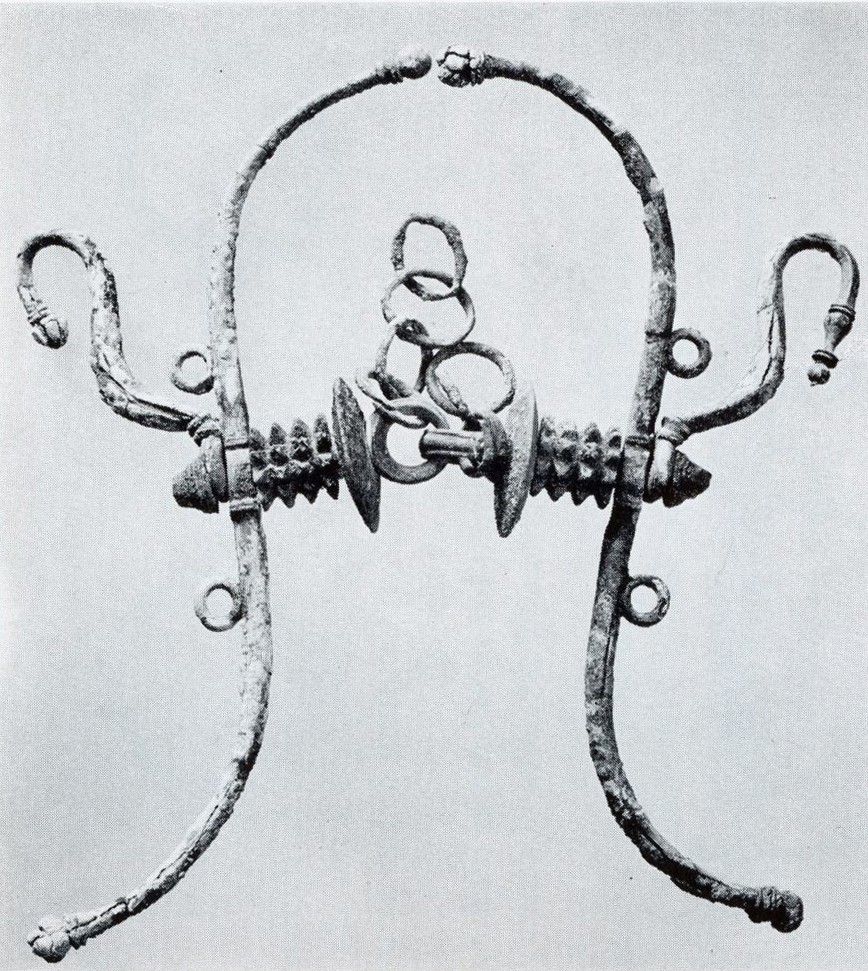
These bits would have somewhat discouraged the kind of inter-active contact we look for in the modern dressage horse. According to Anderson, “it cannot be doubted that the ancient Greeks did use bits that cut their horses’ mouths.”
Certainly Xenophon discouraged the horse from taking contact with the bit – and he is not alone in this attitude, we will find as we progress through the centuries, that the kind of snug contact we look for today is perhaps the most modern of the so called classical principles.
That is it for Xenophon, there isn’t any more.
The rest of the work discusses the arms and equipment needed for the war horse. Don’t rush out and buy your own copy as I promise that all that may conceivably have relevance to today’s riders, is printed above.
It’s a nice start on the road to equestrian excellence but of limited relevance to today’s dressage. Given the size of the horses used by the Greeks, and the absence of a saddle, and with the emphasis on quick turns, then the real heirs of Xenophon, are what we call in Australia ‘sporting’ or ‘novelty’ ponies.
the next episode in the series:
http://www.horsemagazine.com/thm/2010/07/the-classical-tradition-out-of-the-dark-ages-riding-as-art-part-two-the-masters-of-the-high-school/
The Classical Tradition – Part 3 – The Masters of the Nineteenth Century
The Classical Tradition, the Training Scale and Dressage Today

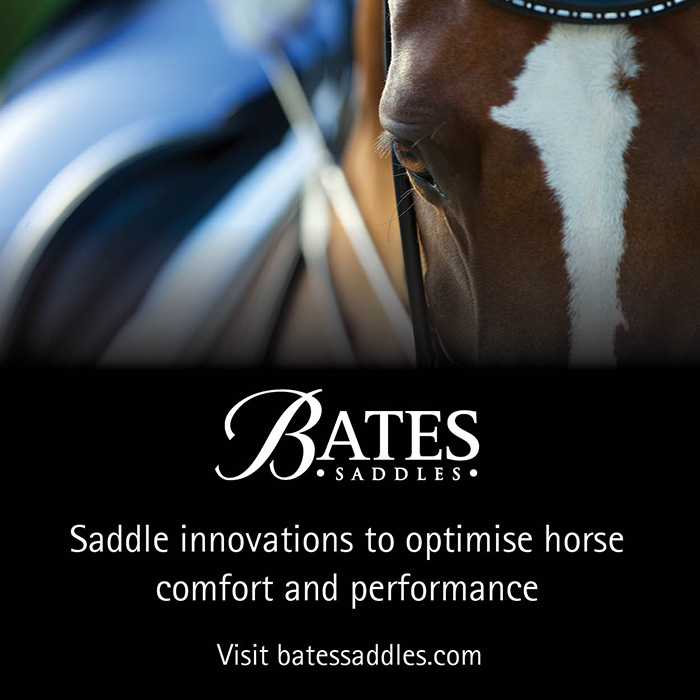

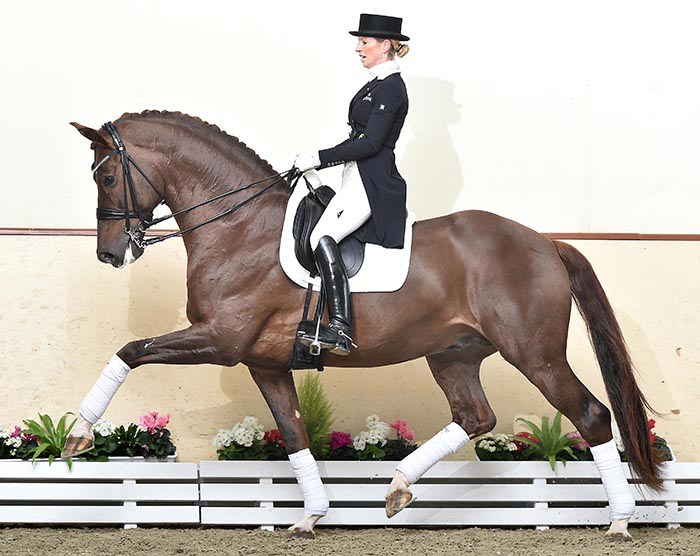
This is a great article. I would like to reprint parts of it for our news letter. Our Dressage club is in the middle of a hot dissension over Classical Dressage verses
Modern or Competition Dressage. It proves that the contact we seek with the horses mouth in Modern Dressage is a world away from the teachings of Xenophon, due to the type of bit used in his day. Please let me know if I can use
part of your article to make this point. Thanks, Winnie Lea
you have my permission, please just add a link to our webpage, regards, Chris Hector
Thanks for the post
Just wanna comment on few general things, the website design and style is perfect, the subject material is really superb 🙂
fantastic post, thank you!
Fantastic blog! I genuinely appreciate how it? s uncomplicated on my eyes also as the information are well written. I’m wondering how i may be notified every time a new publish continues to be made. I’ve subscribed for your rss feed which require to perform the trick! Have a great day!
Great article, but I see little of what size has to do with the training methods employed. Their horses were on the smaller size, sure, however they were tough, fit, and well equipped to go to war. They were just as much to handle as our current horses, unless you mean to refer to these 18 hand giants as more clumsy.